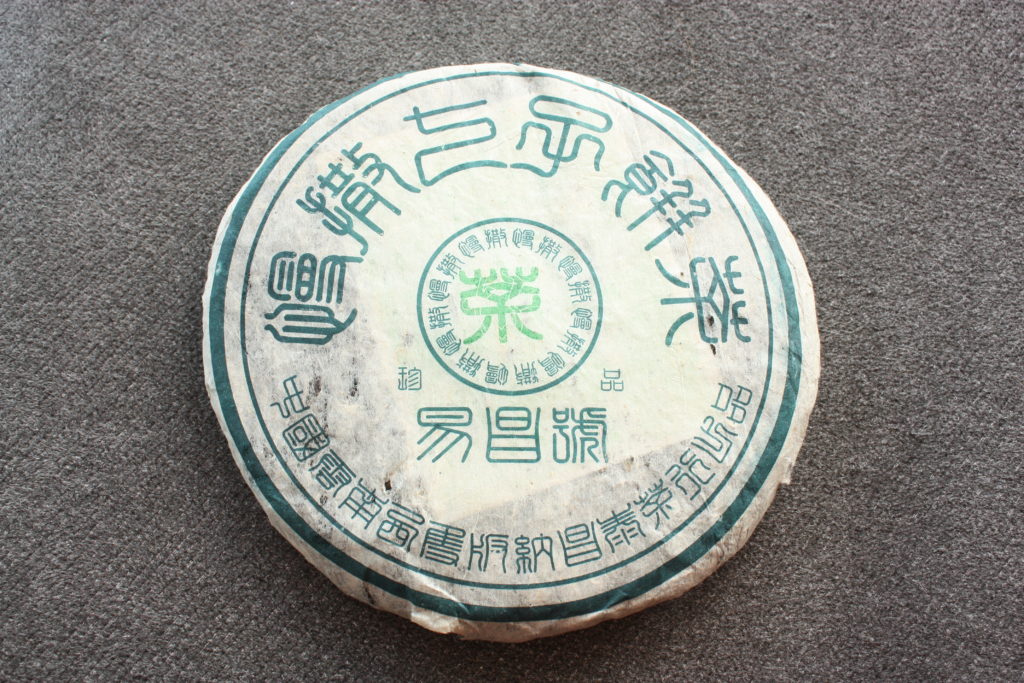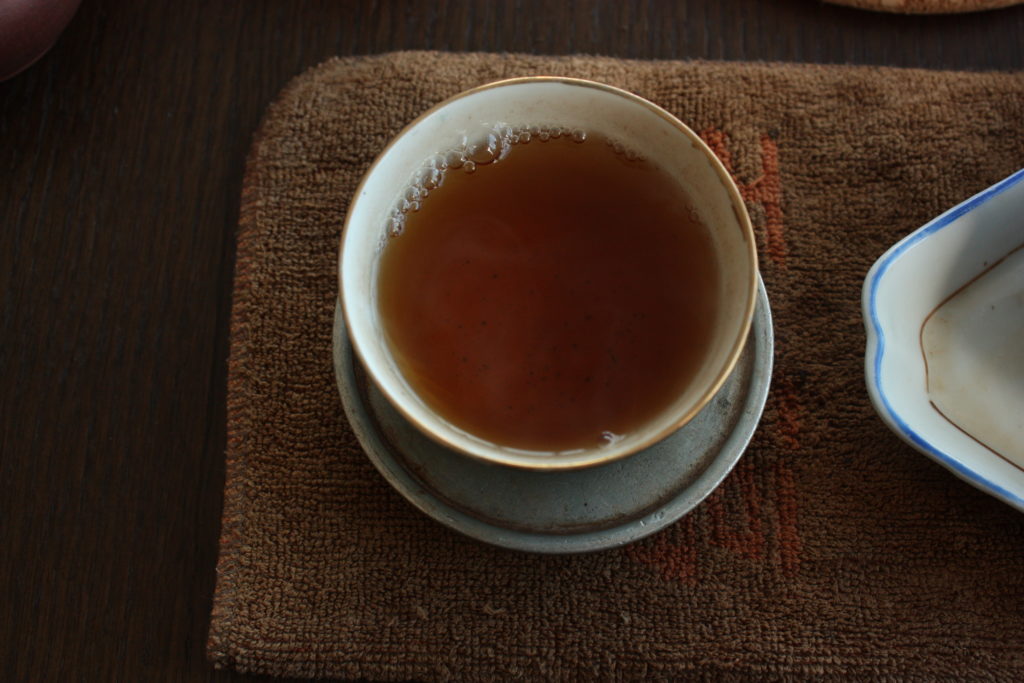The title of this post is perhaps slightly confusing. When is puerh not puerh? Let me explain what I mean…
What I’m talking about here only pertains to raw puerh. For cooked puerh, the whole process is different and the tea is puerh (cooked) as soon as the post-fermentation happened. For raw puerh, however, the tea does not go through such a post-fermentation process where it is basically composted to create the flavours you find in cooked tea. What you have instead, at least in theory, is a long period of aging where the tea changes from young to old, and in the process, transforms itself from a very green looking thing to a dark, brown or black cake of tea, with flavours to match.
Presumably, we buy young tea to age because we want aged flavours and profile. Cooked puerh is also an attempt to recreate the aged taste without the time – at least that was the original intention of the process, although now it has taken on a life of its own. Puerh, at its core, is a tea that requires post-fermentation of some sort. It is that process of aging which gives the tea its unique flavours, complexity, and aromas. It’s what makes it different from all other teas.
So it is a bit confusing when we use the term puerh to denote anything coming from big leaf varietal trees in Yunnan compressed into cake or brick or tuo form. This is partly because we don’t have a name for such things – what, for example, do we call current year products that are meant for aging? For whisky, we can call them “white dog.” I’m afraid I don’t know the name of what you’d call wine that hasn’t gone through barrel aging – but the idea is the same. When we have something that is newly compressed and newly made, but hasn’t gone through that post-fermentation yet, calling those things puerh can be a bit misleading. White dogs aren’t really whisky – they are more like dirty vodka. The colours, aromas, and taste profile are not the same as whisky that has gone through aging. Likewise, wine that hasn’t been aged at all is going to taste funny. In those cases, there are legal limits to when you can call them by their names – in scotch whisky, for example, it’s three years. For cognacs, it’s two years.
Puerh, unfortunately, has a very confusing definition officially, so that such nomenclature is all jumbled. The official definition of the tea (at least in the 2006 update) makes room for both raw and cooked tea, but leaves out post-fermentation for raw tea completely, perhaps at the behest of producers who want to be able to call newly pressed raw teas puerh as well (note the date of 2006 – at the height of the first bubble). So we are left with a definition that is wholly incongruent for raw tea, all it requires is shaqing, rolling, sun drying, compression. For cooked tea, it includes “special techniques” that will cause “slow or fast post-fermentation.” So, the first is really a green tea that is only distinguished by the sun drying process, and the latter is what puerh tea probably should be – post-fermented tea.
I have been drinking a sample series of teas made by the same producer but from different years – ranging from 2006 to 2013. Since they were (and still are) stored in the same condition, it is possible to compare them against each other in terms of aging. The experience of this matches what I think to be true – that it takes about two to three years for a young puerh cake to lose the “greenness” of the tea and to start taking on some of the aged characteristics. Of course, the whole thing is a gradual process of change, but it is clear that by about three years old, the initial green flavours of the tea disappear. Of course, this depends also on compression strength, type of tea, storage environment, etc, but generally speaking, it takes a few years for a tea to start taking on aged flavours.
It also takes a few years for the wheat be separated from the chaff. I personally no longer buy anything younger than about three or four years. Yes, it is possible that you will have to pay more, but actually, I haven’t found that to be the case really. Considering how expensive new cakes are this year, with reasonably good tea often costing over $100 or $150 a cake, teas from 2007-2009 are actually quite competitively priced. Sometimes they are even cheaper, with the added bonus that now you can sort out the ones that are turning bad or bland. Not all tea will age well, just like not all wine will age well. It is a lot easier to pick and choose at the three year mark, with much higher probability of success, than picking them when they are brand new. I think that’s a good cutoff for when we can call them puerh.
Of course, some people just prefer them green and new. That’s all good – drink them if you want. You can buy new ones every year to satisfy that need. No need to store though – because unless you vacuum seal them (which some people apparently do right from the beginning) the flavours will change. If you are vacuum sealing the tea, you’re treating it as green tea. That’s fine, just don’t call it puerh.





Yeah water is really something people don't talk enough about. You sort of settle into your routine and don't think…